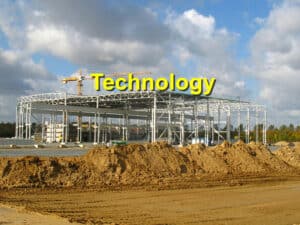Building codes are the backbone of safe, functional, and sustainable commercial construction. These regulations, established by local, state, and national authorities, set minimum standards for design, materials, and construction practices. For contractors, architects, and developers, understanding and adhering to building codes is critical to delivering projects that protect occupants, meet legal requirements, and avoid costly setbacks. Here’s why building codes matter and how they shape commercial construction.
Ensuring Safety and Structural Integrity
Building codes prioritize occupant safety by mandating standards for structural stability, fire resistance, and emergency egress. For example, codes specify load-bearing requirements to prevent collapses under wind, seismic, or snow loads. Fire safety regulations, such as those in the International Building Code (IBC), require fire-resistant materials, sprinkler systems, and clearly marked exits. These measures reduce risks in commercial spaces like offices, malls, or hospitals, where high occupancy demands robust safety protocols. Non-compliance can lead to accidents, injuries, or loss of life, exposing contractors to legal and financial liabilities.
Promoting Accessibility and Inclusion
Codes like the Americans with Disabilities Act (ADA) ensure commercial buildings are accessible to all. Requirements for ramps, wide doorways, and tactile signage make spaces usable for people with disabilities. Compliance fosters inclusivity, expands customer and employee access, and avoids penalties. For instance, failing to install compliant elevators or restrooms can result in lawsuits or project delays during inspections. Contractors must integrate these standards early in design to avoid costly retrofits.
Enhancing Energy Efficiency and Sustainability
Modern building codes increasingly emphasize sustainability. Energy codes, such as ASHRAE 90.1, set standards for insulation, lighting, and HVAC systems to reduce energy consumption. Green building certifications, like LEED, often align with these codes, encouraging eco-friendly materials and renewable energy integration. Compliance lowers operational costs for building owners and reduces environmental impact. Contractors benefit by staying ahead of regulations, positioning themselves as leaders in sustainable construction.
Streamlining Permitting and Inspections
Adhering to building codes simplifies the permitting process and ensures smooth inspections. Local authorities review plans and conduct site visits to verify compliance with codes like the IBC or National Electrical Code (NEC). Non-compliant projects face delays, fines, or stop-work orders, disrupting schedules and budgets. By using Building Information Modeling (BIM) and collaborating with code consultants, contractors can identify issues early, ensuring approvals and maintaining project timelines.
Mitigating Legal and Financial Risks
Failure to follow codes can lead to severe consequences, including lawsuits, fines, or project shutdowns. For example, using substandard materials or skipping fireproofing can violate codes, resulting in costly rework or litigation. Insurance providers may also deny coverage for non-compliant buildings, increasing financial exposure. Staying updated on code changes, such as seismic retrofitting requirements in earthquake-prone areas, helps contractors avoid these risks.
Adapting to Evolving Standards
Building codes evolve to address new technologies, climate challenges, and safety concerns. Contractors must stay informed through industry training or resources like the International Code Council (ICC). Engaging with local building officials during planning clarifies requirements and prevents missteps.
By prioritizing building code compliance, contractors ensure safety, accessibility, and sustainability while minimizing delays and costs. This commitment delivers high-quality commercial projects that stand the test of time and serve communities effectively.
References: Branco, Design Key




